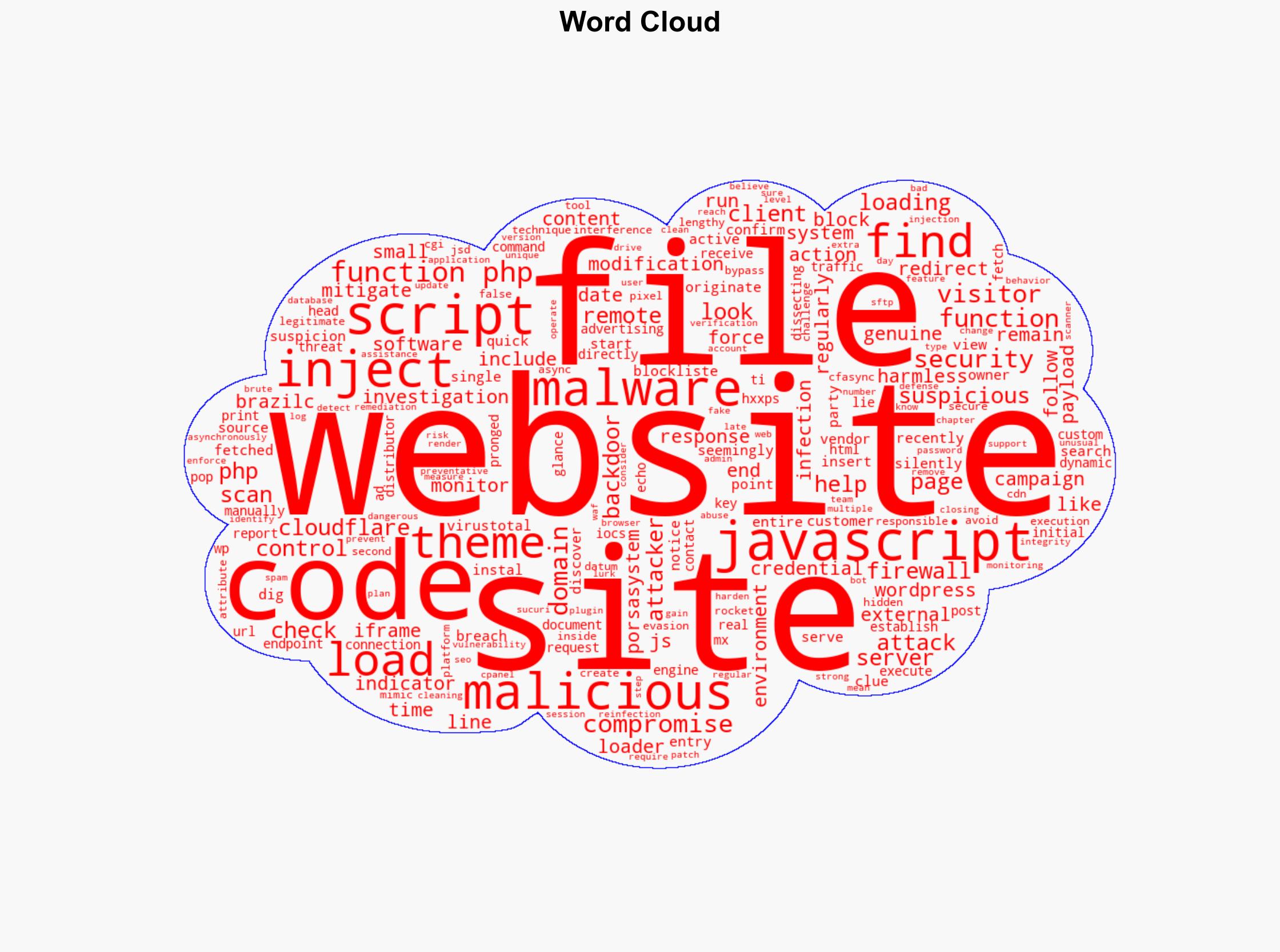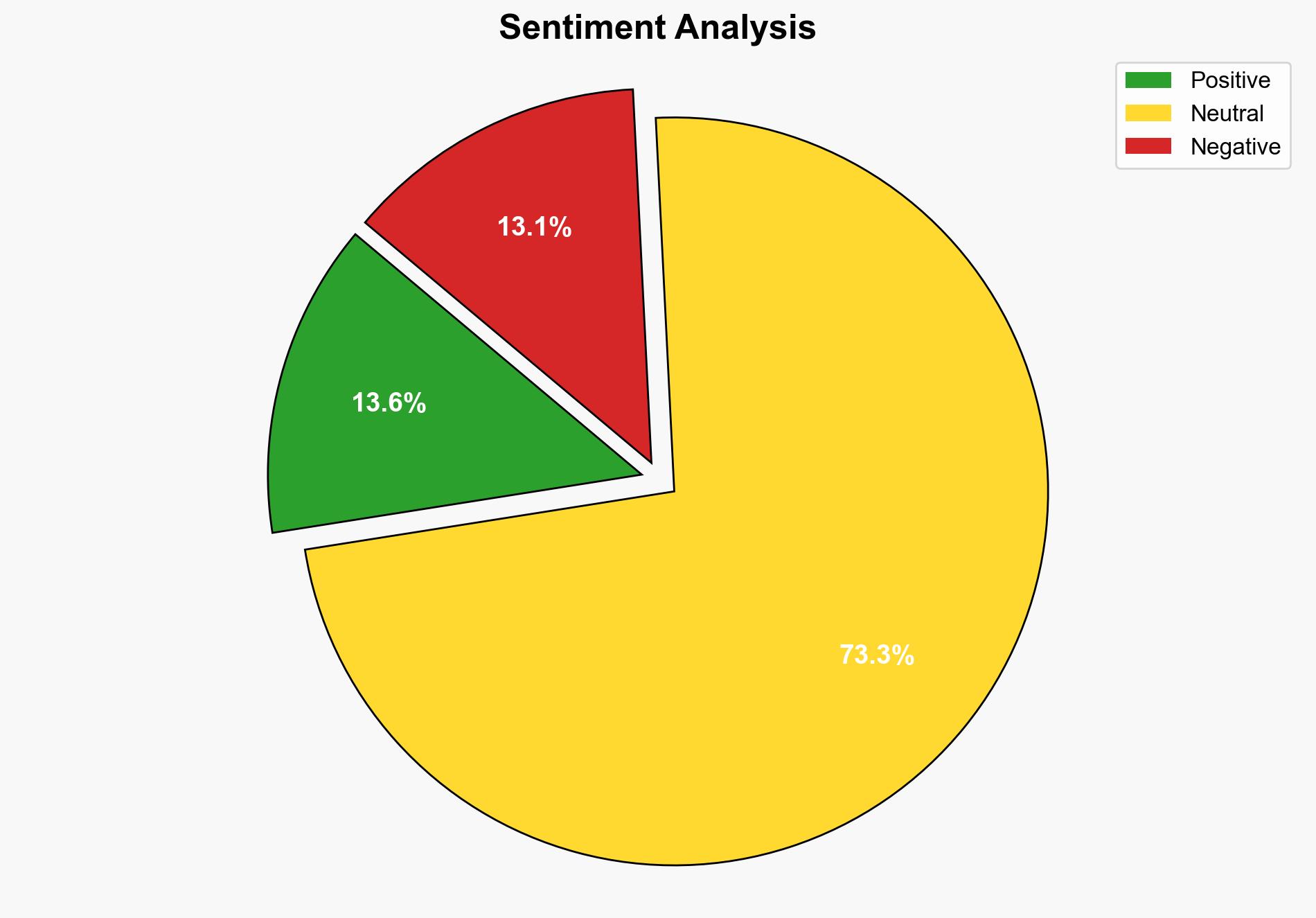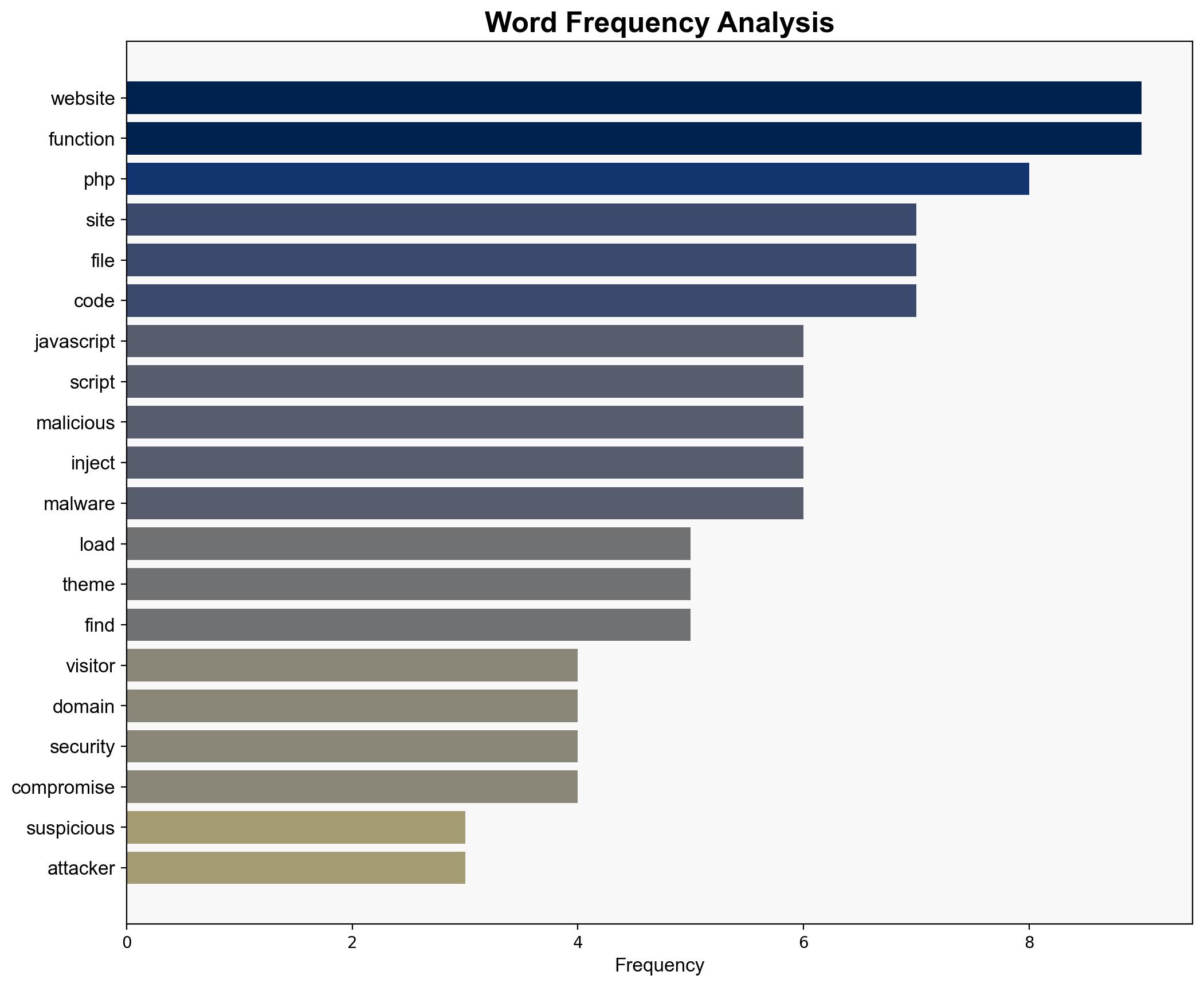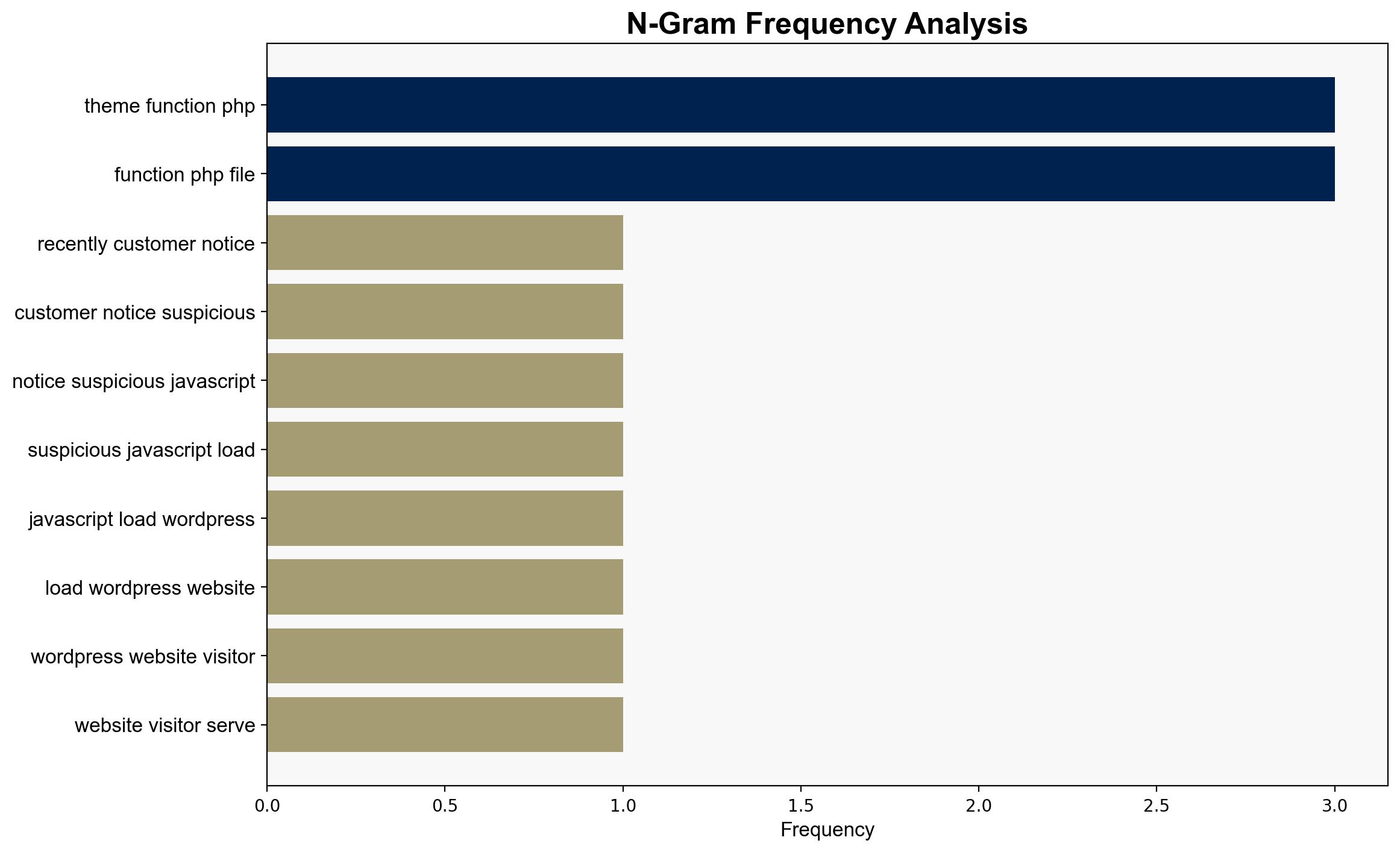Malvertising Campaign Hides in Plain Sight on WordPress Websites – Sucuri.net
Published on: 2025-10-04
Intelligence Report: Malvertising Campaign Hides in Plain Sight on WordPress Websites – Sucuri.net
1. BLUF (Bottom Line Up Front)
The most supported hypothesis is that the malvertising campaign is a coordinated effort by a sophisticated threat actor exploiting WordPress vulnerabilities to distribute malicious scripts. Confidence level: Moderate. Recommended action: Implement comprehensive security measures, including regular updates and monitoring, to mitigate the risk of further exploitation.
2. Competing Hypotheses
Hypothesis 1: The malvertising campaign is orchestrated by a sophisticated cybercriminal group exploiting known vulnerabilities in WordPress themes to inject malicious scripts and compromise visitor sessions.
Hypothesis 2: The campaign is the result of opportunistic attacks by multiple, less-coordinated actors using publicly available exploit kits to target WordPress sites with inadequate security measures.
Using ACH 2.0, Hypothesis 1 is better supported due to the complexity of the attack, the use of command and control servers, and the targeted nature of the malicious scripts, which suggest a higher level of coordination and resources.
3. Key Assumptions and Red Flags
– Assumptions: The attackers have significant technical expertise and access to resources. WordPress sites are not adequately secured.
– Red Flags: Lack of detailed attribution to specific actors; potential underestimation of the attack’s scale.
– Blind Spots: Limited visibility into the full extent of the campaign and potential connections to other cyber threats.
4. Implications and Strategic Risks
The campaign could lead to widespread data breaches, financial losses, and reputational damage for affected organizations. There is a risk of escalation if the campaign is linked to state-sponsored actors or if it targets critical infrastructure. The psychological impact on users and organizations could lead to decreased trust in digital platforms.
5. Recommendations and Outlook
- Implement regular security audits and updates for WordPress sites to close known vulnerabilities.
- Deploy Web Application Firewalls (WAFs) and intrusion detection systems to monitor and block malicious activities.
- Scenario Projections:
- Best: Rapid identification and patching of vulnerabilities lead to a decline in successful attacks.
- Worst: Attackers adapt and escalate their tactics, targeting more critical systems.
- Most Likely: Continued exploitation of vulnerable sites with moderate impact mitigated by increased security awareness.
6. Key Individuals and Entities
No specific individuals are identified in the intelligence. The campaign is linked to domains such as brazilc.porsasystem and command and control servers.
7. Thematic Tags
national security threats, cybersecurity, counter-terrorism, regional focus





